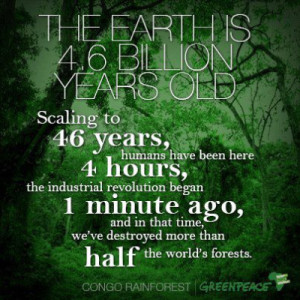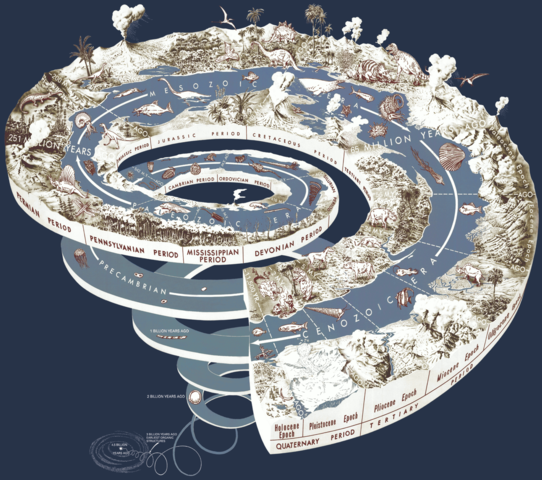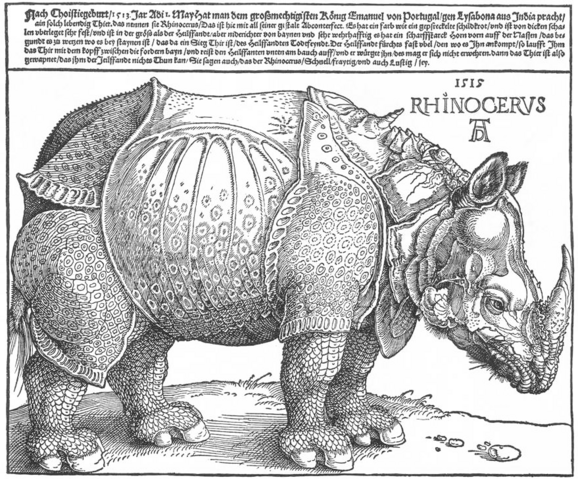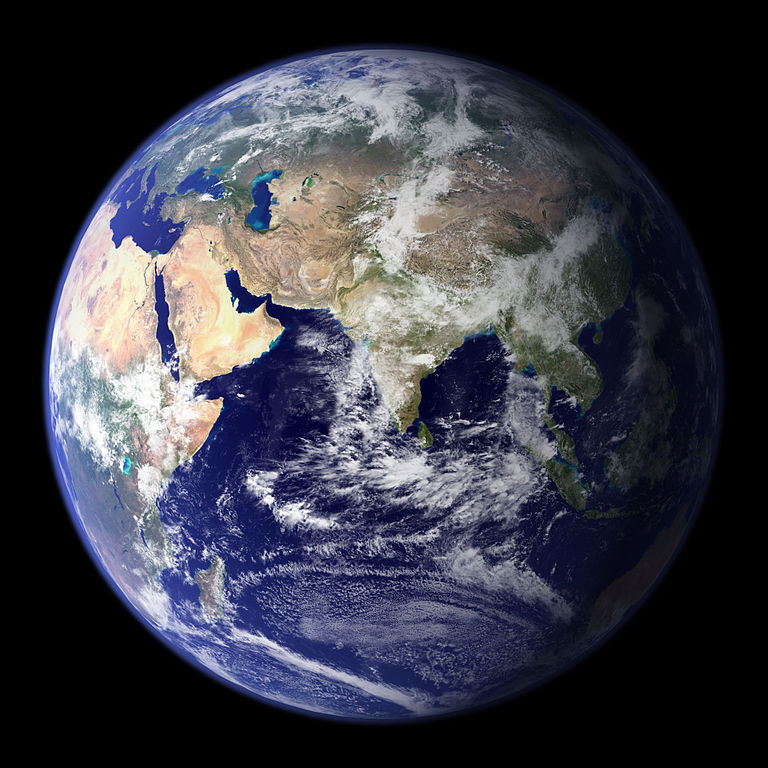Happy Earth Day! Today, millions of people around the world will celebrate the natural world and our role as humans in protecting and restoring it. However, science has shown us that the nature of nature is change. How do we protect a changing system? What does Earth Day mean, really?
Our role
Earth Day represents a moment of unity for those who care about the living things around us, but environmentalism is not a unified ideology by any means. Rather, it is a diverse set of beliefs about humans’ relationship with the living things around us. Factions range from Bright Green Environmentalists who believe that technological advances will solve our problems without much need for direct collective action, to Deep Ecologists who hold that “Humans have no right to reduce this [biological] richness and diversity except to satisfy vital needs” and advocate limiting the overall human population. Eco-feminists, eco-anarchists, eco-socialists, eco-capitalists, and radical environmentalists all have different ideologies about the privileges, rights, and responsibilities that humans have with regard to the natural world (and each other), as well as the best ways to achieve environmental goals.

But how?
Some environmentalists view ecosystem destruction as a regrettable result of the necessary work of providing a healthy life for humans, whereas others see it as a fundamental sin of matricide. Some support the idea of inalienable rights of animals, while others think that we should merely ensure the welfare and comfort of animals. The demands of environmentalists range from slowly rolling out cap-and-trade schemes to reduce carbon emissions to fundamentally restructuring society to reduce ecological impact.
But even if we disagree about how we should save the planet, we should at least have a clear idea of what “Save the Planet” means. Many environmentalists of all stripes view the Earth as an unchanging Eden that humans have disturbed. This Earth is a human God, not the planet we live on.

Except that, on this scale, anything even remotely resembling the trees of today didn’t evolve until 4 years ago and way more than half of the forest has been wiped out multiple times in those four years. Source: Greenpeace
“The Earth”
The truth is that Earth is a constantly dynamic planet that has been accosted by global Ice Ages, comets, volcanoes, swings in concentrations of toxic gases like oxygen, and other natural disasters. Earth has undergone five mass extinctions before, and will undergo more before the Sun goes out, whether we’re here for it or not. And while these mass extinctions all happened millions of years ago, drastic change has also happened on a more human timescale: 12,000 years ago, Minnesota was covered in towering glaciers and giant ground sloths roamed North America.

Round we go!
When we talk about conservation of biodiversity, we often think of the extinction of species – particularly “charismatic megafauna” like polar bears and tigers. There are good reasons for this focus on extinction. Each species represents millions of years of evolution, has a unique role in its ecosystem, and cannot be replaced (though it seems we’re going to try). On a scientific as well as an emotional level, the extinction of a species is a big loss, and these losses are stacking up. Humans are causing the “Sixth Mass Extinction,” meaning that the rate of species loss is dramatically higher than normal.
But it can only be higher than normal because there is a normal rate of species extinction. As the paleontological record shows, nearly every species to have lived on Earth has gone extinct. The average extinction rate for species varies from group to group; for mammals, it is 0.2-0.5 species per million species per year. These “background extinction rates” quantify the ability of species to adapt – or not – to an ever-changing world. Should humans save all species from extinction, and attempt to lock the Earth in stasis? Perhaps we should save just those species whose extinction is caused by humans in the first place. But how can we tell the difference, when pollution reaches even the most pristine corners of Earth?

Ghosts of ecosystems past
The history of life on Earth is a story of loss, survival and adaptation. Human pollution is often particularly nasty, and there is no exact precedent for the changes we are making. But they are not so different in scale to ecological disasters in Earth’s past. Though trilobites, lycophyte trees and (non-bird) dinosaurs may have perished, many lineages have survived these past insults and gone on to proliferate. Though humans and major groups of species may not survive our current bout ecological destruction, it is likely that many will. Even if we do nothing to stop our pollution, Earth’s biosphere will eventually return to diverse ecosystems, though they will look very different from those we see today. Just as it would be if we never existed. While preserving the natural ecosystem is important for continued human existence and the creatures alive now, “saving” or “protecting” the Earth is, in the long view, a strange goal.
No reason for complacency
You are probably thinking that these points are glib and irrelevant – the ramblings of an evolutionary biologist, thinking on deep timescales about the urgent crises of our day. Who cares if all species eventually go extinct, when we see majestic creatures that are part of our natural and cultural heritage disappearing before our eyes due to our craven industrial destruction? Who cares if carbon dioxide levels were higher 100 million years ago, when the current rise threatens the performance of global agriculture?

I absolutely agree, for both moral and practical reasons. Morally, the extinction of Tyrannosaurus rex is not equivalent to the loss of the Yangtze River Dolphin. Humans must take responsibility for our actions in a way that comets cannot. We are from Earth, we can occasionally understand our actions, and we must do less damage to our biological family.
Practically, we are threatening the livelihood of our own children. Although we live on a changing planet and always have, those changes can still hurt us tremendously. Despite all of our technological prowess, humans will have a tough time surviving the massive crop failures and unbreathable air that loom on the horizon. Humans live on the current Earth, and if we change that world too quickly, we will lose the ecosystems that keep our water clean, our air breathable and our bellies full. Though life on Earth will likely rebound from this mass extinction over millions of years, there’s no guarantee that humans won’t be one of the casualties. As George Carlin once said, “The planet isn’t going anywhere. We are!”
An informed environmentalism
It is understandable why environmental NGOs put an emphasis on protecting and restoring what was. The pace of ecological destruction, while not unprecedented in Earth’s history, is unusually high, and prevents organisms from adapting or migrating in time. On the timescale of the next few decades most of our focus should absolutely be on slowing down the rate of destruction and maintaining the ecosystems we have. An easy way to make this case to the public is to make emotional appeals to not kill our majestic Earth, which on some level resonates with most of us. Nobody wants to see Siberian Tigers go extinct. Nobody wants to kill the mother planet that gave birth to us.
However, if our environmentalism is driven by a naive view of Earth as an unchanging Eden, and an effort to preserve every charismatic species we find beautiful, we are unlikely to make ecologically wise choices about how to devote our resources. We need to understand what we are trying to protect, and what it means to “protect” a changing system. The ideological emphasis on keeping things the way they were based on emotional appeal has real consequences. This attitude has resulted in missteps and unfortunate expenditures of scarce conservation resources. Using 24-hour armed bodyguards to protect rhinos or breeding pandas at millions of dollars in expense takes money away from conservation efforts that could more realistically protect our natural heritage and the ecosystems we depend on.

How much is a panda worth? Source: Wikimedia user Colegota
Environmental policies have real impact on people’s livelihoods. If we are going to ask for collective sacrifice, we need to be clear on why. Preserving “the Earth” is an illusion of a goal, because the Earth is in constant flux, losing species and ecosystems as new ones arise. We – scientists, environmentalists, and the public at large – need to have a real conversation about what our priorities are here. We have limited resources and time to handle environmental problems, and the problems we face are daunting. Should we focus on maintaining the most possible biodiversity? Keeping nutrient gradients intact, and ecosystems functioning as best as possible? How many resources should be allocated to mitigating our effects on the environment, and how much should be spent on adapting to changes that are already underway?
These serious conversations are already happening in rarefied circles of conservation biologists, ecologists, and policy makers. While their expertise is invaluable, the future of the natural world belongs to all of us, and so do these decisions. On this Earth Day, you doubtless see an outpouring of human love for the natural world. It is time that popular environmentalism grew up and joined the conversation about what Earth we are loving, and how to practice that love.
References:
Fankhauser, Samuel, Joel B. Smith, and Richard SJ Tol. “Weathering climate change: some simple rules to guide adaptation decisions.” Ecological economics 30.1 (1999): 67-78. DOI
Beddington, John, M. Asaduzzaman, and M. Clark. “Achieving food security in the face of climate change: Final report from the Commission on Sustainable Agriculture and Climate Change.” (2012). link
Rockström, Johan, et al. “A safe operating space for humanity.” Nature461.7263 (2009): 472-475. DOI
Järup, Lars. “Hazards of heavy metal contamination.” British medical bulletin68.1 (2003): 167-182. DOI
Stork, Nigel E., et al. “Vulnerability and Resilience of Tropical Forest Species to Land‐Use Change.” Conservation Biology 23.6 (2009): 1438-1447. DOI
Naidoo, Robin, et al. “Global mapping of ecosystem services and conservation priorities.” Proceedings of the National Academy of Sciences 105.28 (2008): 9495-9500. DOI

